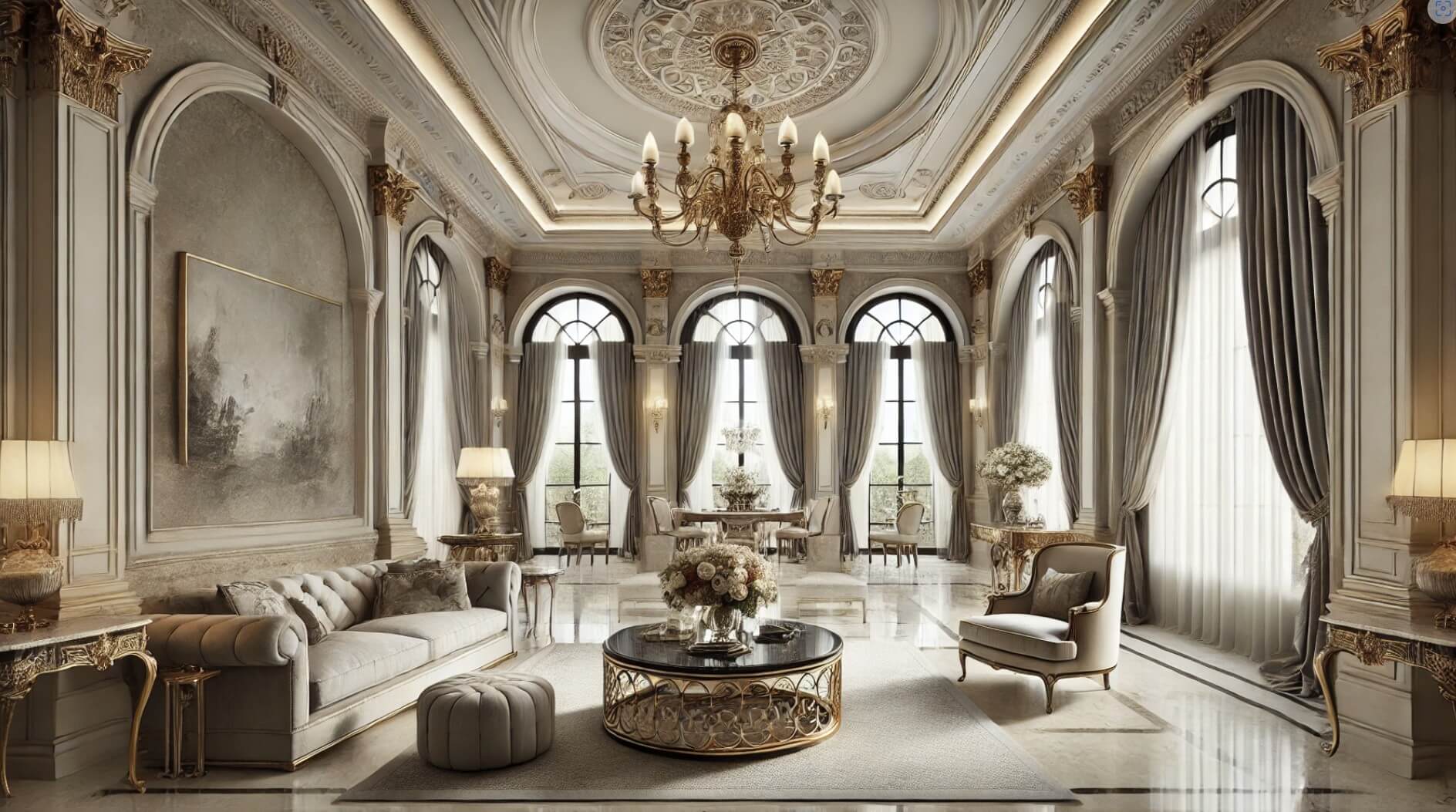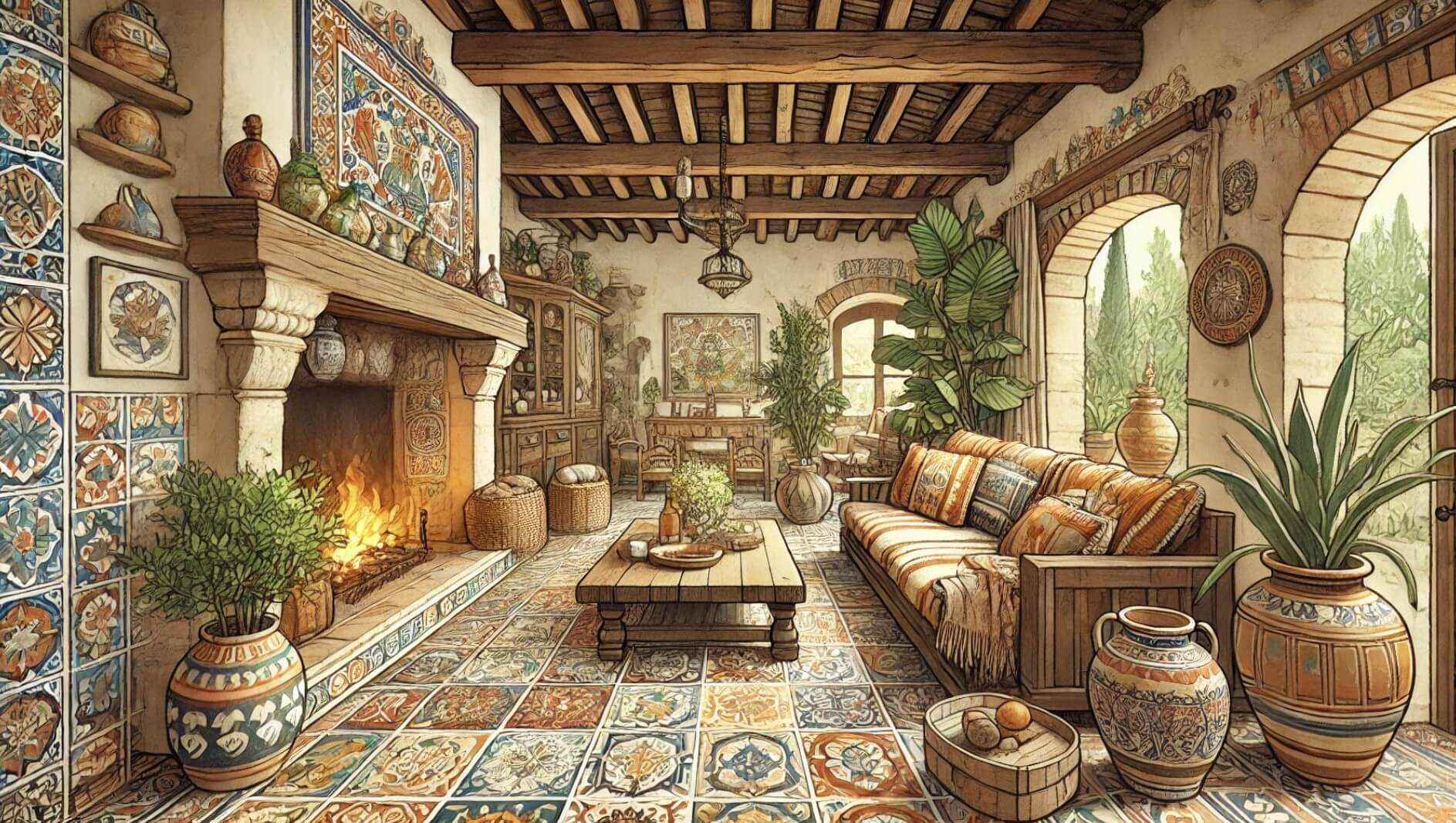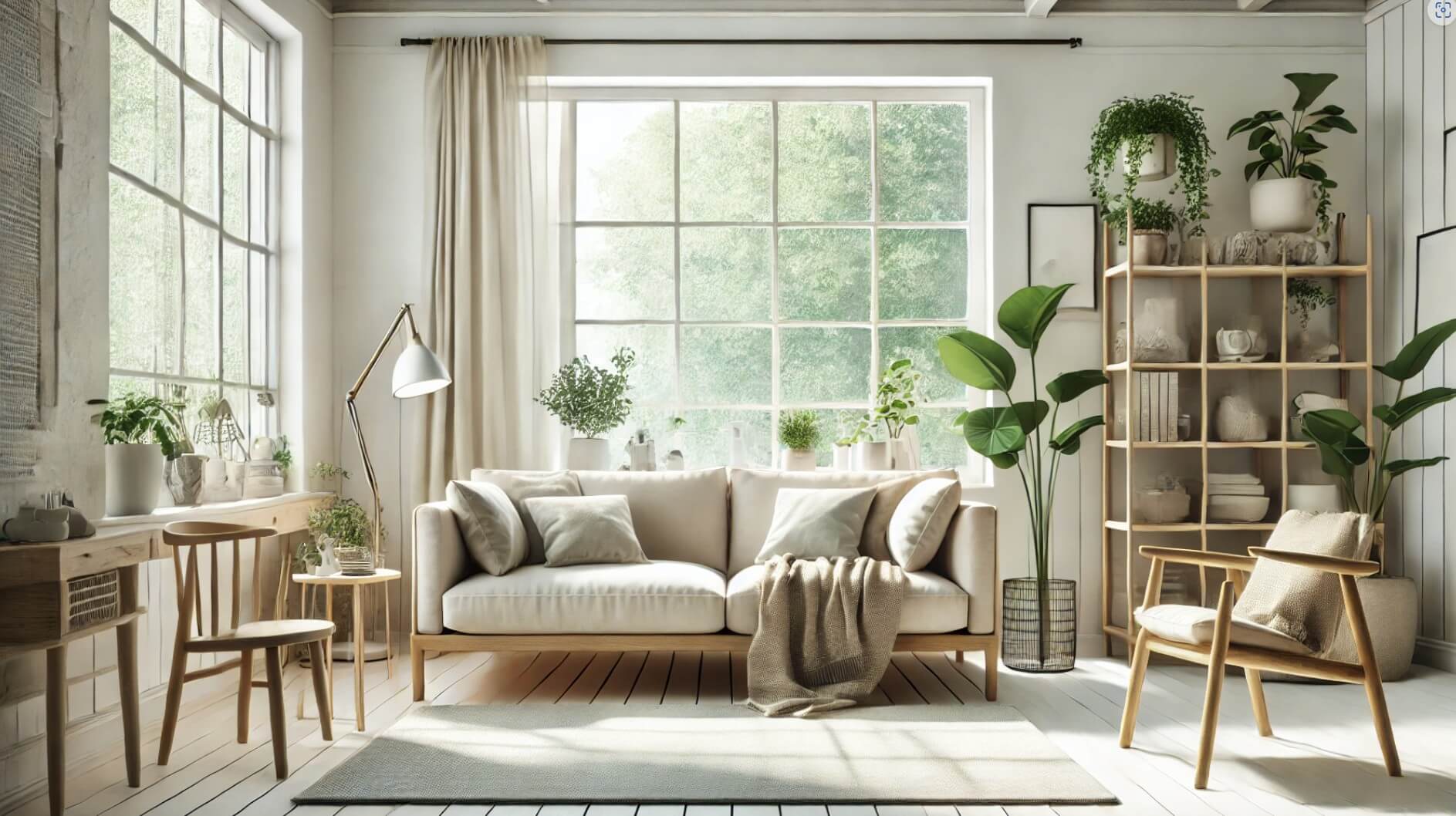Introduction
Interior design reflects not only individual tastes but also the cultural heritage and traditions of a country. From the elegant sophistication of French decor to the minimalist beauty of Danish design, each country has its own unique approach to creating beautiful and functional spaces. This journey will take you through the distinctive styles of Italy, France, Spain, Denmark, Germany, and the United States, highlighting the key elements that make them stand out.
Italian Interior Design
Italian interior design is renowned for its timeless elegance and attention to detail. Rooted in centuries of artistic heritage, it combines classical elements with modern sophistication. Homes often feature high-quality materials such as marble, wood, and wrought iron, reflecting the country’s rich history and craftsmanship. Many people all around the world love Italian interior design, and it's a popular choice in many places.
A hallmark of Italian design is its balance between functionality and aesthetics. In living spaces, you’ll find sleek furniture with clean lines paired with bold decorative pieces like statement lighting or vibrant artwork. The color palette typically includes warm neutrals, terracotta, and gold accents, creating an inviting atmosphere.
Italian homes often incorporate open spaces that encourage social interaction, with kitchens and dining areas being central to the design. The influence of the Mediterranean is evident in features like large windows, outdoor terraces, and the use of natural light to enhance the ambiance. Whether in a rustic Tuscan villa or a chic Milanese apartment, Italian design effortlessly combines tradition with contemporary flair.
French Interior Design
French interior design is celebrated for its effortless elegance and timeless charm. Combining classic and modern elements, it creates spaces that are both sophisticated and comfortable. The French aesthetic often emphasizes symmetry, ornate details, and a harmonious blend of textures and colors.
A typical French home features high ceilings, large windows, and intricate moldings. Neutral tones like soft grays, whites, and beiges form the base palette, often accented with hints of gold, pastel shades, or deep blues. The furniture is a mix of antique pieces and contemporary designs, creating a sense of history while staying current.
French interiors prioritize quality over quantity. A simple yet luxurious chaise longue, a statement chandelier, or a hand-carved mirror can serve as focal points in a room. Natural materials like wood, stone, and linen are commonly used, and spaces are often adorned with fresh flowers or vintage decor items. Whether it’s a Parisian apartment or a country house in Provence, French design embodies an effortless sophistication that feels both welcoming and refined.
Spanish Interior Design
Spanish interior design reflects a rich cultural heritage, combining traditional craftsmanship with the relaxed elegance of Mediterranean living. Known for its warm and inviting atmosphere, this style incorporates natural materials like terracotta, wood, and wrought iron, giving homes a rustic yet refined character. Textures play a significant role, with rough plaster walls, exposed wooden beams, and intricate tile work adding depth and personality to the spaces.
One of the defining features of Spanish interiors is the prominent use of colorful and patterned tiles, often hand-painted. These tiles are not only used on floors but also on walls, staircases, and even as decorative accents on furniture. Arched doorways and windows are another signature element, enhancing the flow of natural light and creating a sense of openness throughout the home. This architectural detail, combined with high ceilings, fosters a spacious and airy environment.
The color palette is inspired by the surrounding landscape, with earthy tones like ochre, terracotta, and deep red dominating. These are often complemented by vibrant blues and greens, echoing the Mediterranean Sea. Furnishings typically feature a blend of robust, handcrafted wooden pieces alongside softer, upholstered elements for comfort. Accessories like embroidered cushions, handwoven rugs, and ornate wrought iron fixtures complete the look, adding layers of texture and authenticity.
Outdoor spaces are an essential part of Spanish design. Courtyards and terraces are designed to extend the living area, often featuring fountains, lush greenery, and seating areas that encourage relaxation and social interaction. The seamless integration of indoor and outdoor living makes Spanish design not just aesthetically pleasing but also incredibly functional for warm climates. Its enduring appeal lies in its ability to merge tradition with a sense of comfort and modern practicality.
Danish Interior Design
Danish interior design, a cornerstone of the renowned Scandinavian style, is celebrated for its simplicity, functionality, and timeless elegance. Rooted in the principles of minimalism, it focuses on creating harmonious and uncluttered spaces that promote comfort and well-being. This approach to design, often referred to as “hygge,” prioritizes coziness and a sense of calm in the home. In Denmark there are many great designs, like the famous ægget, 7-chair, Vermund larsen and many others. For those who are into danish design take a look here.
The hallmark of Danish interiors is their use of neutral color palettes, typically featuring shades of white, gray, and beige. These muted tones provide a clean and serene backdrop, which is often accented with natural materials like light wood, leather, and wool. Furniture is designed with both form and function in mind, characterized by sleek lines and ergonomic shapes. Iconic pieces from designers such as Arne Jacobsen and Hans Wegner continue to define Danish style worldwide.
Lighting is an essential element in Danish design, particularly in a country where natural light can be limited during the winter months. Pendant lights, floor lamps, and candles are used strategically to create a warm and inviting ambiance. Additionally, large windows and open floor plans are common, maximizing the flow of light and enhancing the sense of space.
Accessories are kept minimal, with a focus on functionality and quality craftsmanship. Soft textiles, such as throws and cushions, add a touch of warmth, while carefully selected decor items like ceramics and houseplants bring life to the space. Danish design exemplifies the perfect balance between aesthetics and practicality, making it one of the most influential styles in the world of interior design.
German Interior Design
German interior design is defined by its emphasis on functionality, durability, and precision. Drawing from the principles of Bauhaus, it values simplicity and practicality, ensuring that every element in a space serves a clear purpose. This approach results in interiors that are highly efficient, yet stylish and inviting. Clean lines, geometric forms, and high-quality materials are key characteristics of this design style.
The color palette in German interiors often leans toward neutral tones such as white, gray, and black, creating a sleek and modern aesthetic. These are frequently complemented by natural materials like wood, stone, and leather, adding warmth and texture to the overall look. Furniture is typically modular and versatile, allowing for easy customization to fit different needs and spaces.
German homes are known for their innovative use of space, often incorporating built-in storage solutions to minimize clutter. Multi-functional furniture pieces, such as extendable tables and foldable chairs, are commonly used to maximize utility without sacrificing style. This practical approach is particularly evident in urban apartments, where space can be limited.
Lighting plays a crucial role in German interior design, with a focus on efficiency and ambiance. LED technology is widely used, both for its energy-saving benefits and its ability to provide customizable lighting solutions. Accent lighting is often employed to highlight architectural features or art pieces, adding a personal touch to the space. German design exemplifies how innovation and tradition can coexist, creating interiors that are both functional and aesthetically pleasing.
Bringing It All Together
Interior design is a reflection of culture, history, and individual lifestyle, and each country brings its own unique perspective to the art of creating beautiful and functional spaces. From the timeless elegance of Italian and French interiors to the warmth and charm of Spanish homes, the world of design offers endless inspiration. Scandinavian minimalism, as showcased in Danish homes, and the innovative practicality of German interiors highlight the diversity and creativity within Europe. Meanwhile, American design trends reflect a melting pot of influences, embracing boldness and individuality.
Exploring these styles not only enhances our appreciation for global design but also provides valuable insights into how we can create spaces that resonate with our own needs and values. Whether you are drawn to the rustic charm of a Spanish courtyard, the sleek lines of a German loft, or the cozy elegance of Danish hygge, the possibilities are endless. By blending these influences, you can create a space that feels uniquely yours while honoring the rich traditions of design from around the world.


